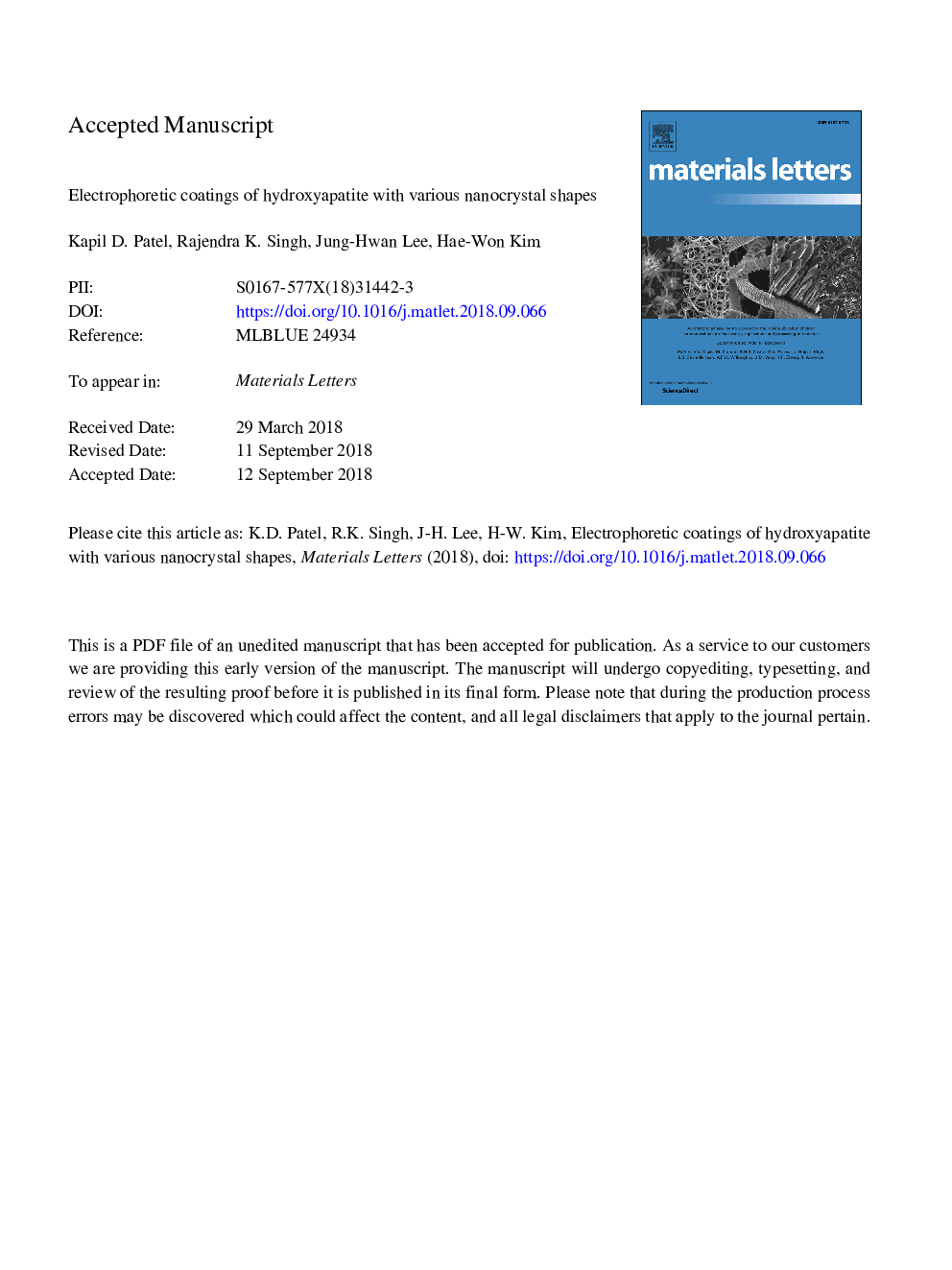| Article ID | Journal | Published Year | Pages | File Type |
|---|---|---|---|---|
| 11026562 | Materials Letters | 2019 | 18 Pages |
Abstract
Bioactive nanostructured coating has been a key strategy to improve the cell adhesion and osseointegration of metallic implants. This study presents the electrophoretic coatings of hydroxyapatite with tunable nanocrystal morphologies. The hydroxyapatite nanocrystals were prepared with three different elongated dimensions by the hydrothermal method (â¼80â¯nm; SHA, â¼300â¯nm; MHA, and â¼900â¯nm; LHA), which were used in combination with a fugitive biopolymer chitosan for the electrophoretic deposition on titanium. All the HA coatings were densely and homogeneously deposited and had different and unique nanotopologies and corresponding surface areas. The coating parameter significantly altered the cell behaviors including anchorage, spreading and proliferation; the cell adhesion was better on the small- and middle-sized nanocrystals (SHA, MHAâ¯>â¯LHA), which was interestingly opposite in cell spreading (LHAâ¯>â¯SHA, MHA), and then the cell proliferation was again up-regulated on SHA and MHA. Although more studies are needed to elucidate the biological phenomenon, the sets of results imply the importance of tailored nanocrystal morphology in the initial (adhesion and growth) cellular events.
Keywords
Related Topics
Physical Sciences and Engineering
Materials Science
Nanotechnology
Authors
Kapil D. Patel, Rajendra K. Singh, Jung-Hwan Lee, Hae-Won Kim,
